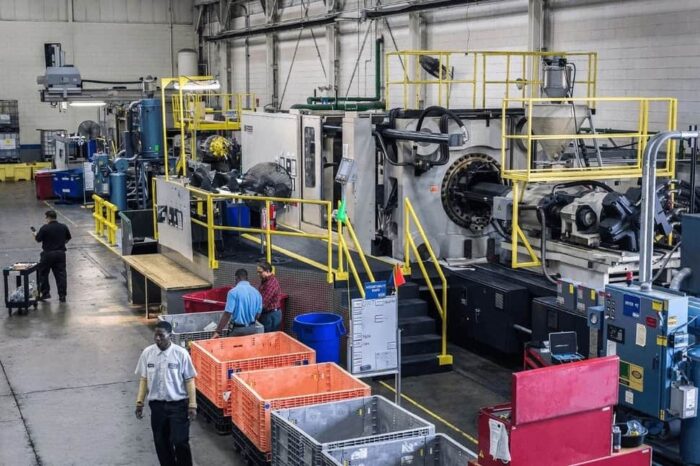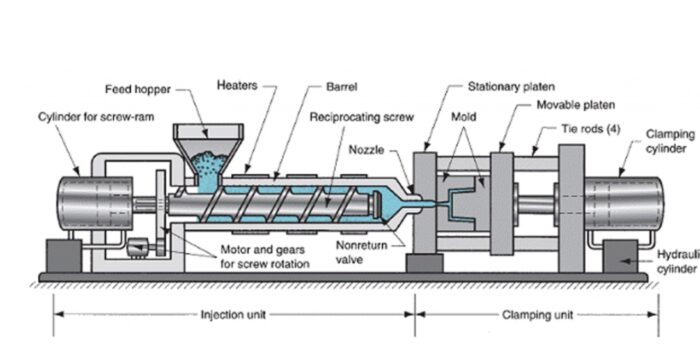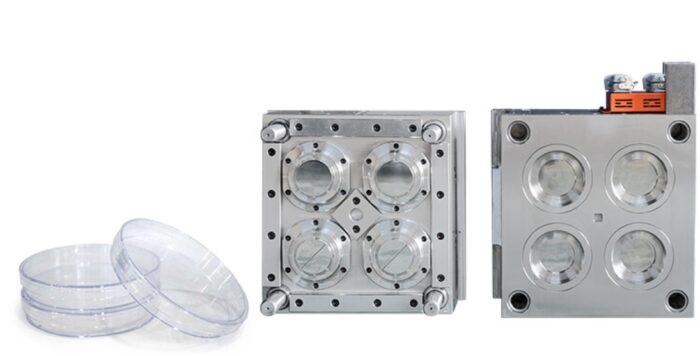
Plastic injection molding has revolutionized the manufacturing industry, making it possible to produce high-quality plastic products in large quantities. The injection molding process involves melting plastic pellets and injecting the molten material into a mold under high pressure, which then solidifies into the desired shape. This process can be referred to as injection moulding or molding, and it has become a widely used method in the production of various plastic products.
The plastic injection molding process offers many advantages over other manufacturing methods, such as cost-effectiveness, speed, and high precision. It is also a highly customizable process, allowing manufacturers to create intricate designs with great detail and accuracy.
In this article, we will dive deeper into the injection molding process, its various components, and the role of an injection molder in the process.
Whether you are new to the plastic injection molding industry or a seasoned professional, this article aims to provide valuable insights into molding plastic and how it can benefit your business.
Process of plastic injection molding:
Plastic injection molding is a widely used manufacturing process in which molten plastic is injected into a mold under high pressure, and then cooled and solidified into the desired shape. The process is known for its ability to produce complex, high-quality plastic parts in large quantities, making it a popular choice for many industries. In this comprehensive guide, we will walk you through the step-by-step process of plastic injection molding.
Step 1: Designing the Mold
The first step in the plastic injection molding process is designing the mold. The mold is typically made of steel or aluminum and consists of two halves that fit together to form the desired shape. The mold design must take into account factors such as the type of plastic material being used, the part’s size and shape, and any necessary draft angles or undercuts.
Step 2: Preparing the Injection Molding Machine
Once the mold design is complete, the injection molding machine is set up and prepared for use. This involves installing the mold onto the machine and adjusting the machine’s settings, including the injection pressure, temperature, and cooling time.
Step 3: Melting the Plastic
The plastic pellets or resin are loaded into a hopper, which feeds them into the injection molding machine’s heating chamber. The plastic is heated to a melting point, and the injection molding machine’s screw or plunger then injects the molten plastic into the mold cavity.
Step 4: Cooling and Solidifying
After the plastic is injected into the mold, it begins to cool and solidify, taking on the shape of the mold cavity. The cooling time can vary depending on the type and thickness of the plastic material, but it is crucial to wait until the plastic has fully solidified before removing it from the mold.
Step 5: Ejecting the Molded Part
Once the plastic has fully solidified, the mold is opened, and the molded part is ejected from the mold cavity. The ejector pins or plates help to remove the part from the mold by pushing it out of the cavity.
Step 6: Post-Molding Operations
After the molded part is removed from the mold, it may require additional post-molding operations, such as trimming excess plastic or adding finishing touches, such as paint or texture. These additional steps can help to enhance the part’s appearance and functionality.
Role of an injection molder in the process
In the plastic injection molding process, several components work together to create a final product. These components include the injection molding machine, the mold, the plastic material, and the injection molder.
-
Injection Molding Machine:
The injection molding machine is the heart of the plastic injection molding process. It consists of a hopper, a heating chamber, a screw or plunger, and a mold clamping unit. The hopper is where the plastic pellets or resin are fed into the machine. The heating chamber heats the plastic to a molten state, and the screw or plunger injects the molten plastic into the mold cavity. The mold clamping unit is responsible for opening and closing the mold and applying the necessary pressure to keep the mold closed during the injection process.
-
Mold:
The mold is the component that shapes the plastic material into the desired final product. The mold consists of two halves, a core, and a cavity. The core is the internal part of the mold that shapes the inner surface of the product, and the cavity is the external part that shapes the outer surface of the product. The mold design must take into account various factors such as part size, shape, and complexity, as well as material properties, cooling requirements, and part ejection.
-
Plastic Material:
The plastic material used in process injection must be carefully selected to ensure that it meets the required properties for the final product. Factors such as strength, durability, temperature resistance, and flexibility must be considered when choosing the material. Common materials used in injection molding include polyethylene, polypropylene, polystyrene, and PVC.
-
Injection Molder:
The injection molder is a skilled professional who operates the injection molding machine and oversees the entire injection molding process. The injection molder is responsible for setting up the machine, preparing the mold, and adjusting the machine’s settings to ensure that the plastic material is injected into the mold cavity with the correct pressure, temperature, and cooling time. The injection molder must also monitor the injection molding process to ensure that the final product meets the required quality standards.

Conclusion
Plastic injection molding is a highly efficient and versatile manufacturing process that offers many benefits over other methods. It enables the production of complex and precise plastic parts in large quantities, making it a popular choice for various industries.
The injection molding process involves several components, including the injection molding machine, mold, plastic material, and injection molder. The role of the injection molder is critical in ensuring that the entire process runs smoothly, and the final product meets the required quality standards.
By partnering with a reputable plastic injection molding manufacturer, businesses can leverage the advantages of this process and obtain high-quality plastic products tailored to their specific needs. Overall, plastic injection molding has revolutionized the manufacturing industry and continues to drive innovation in various sectors.







